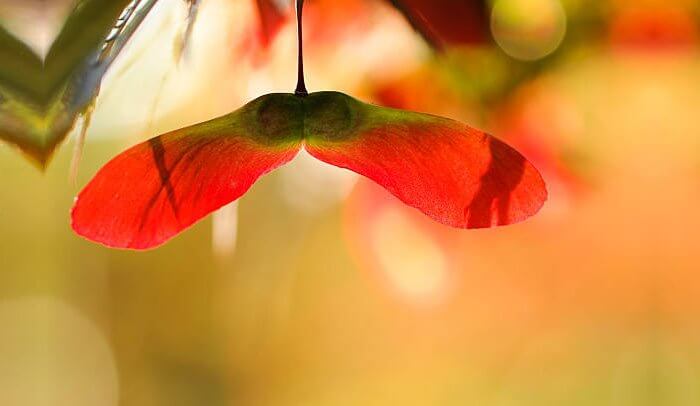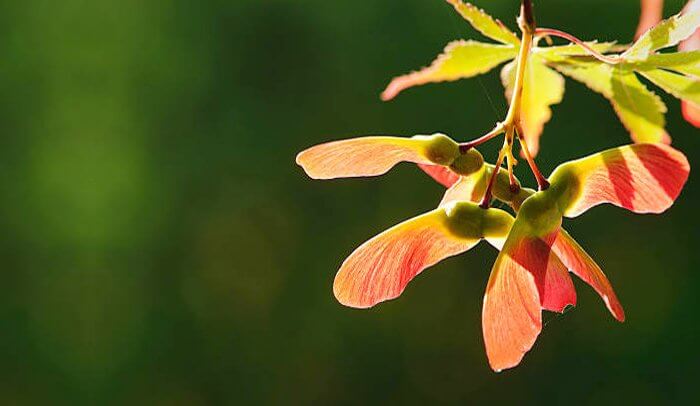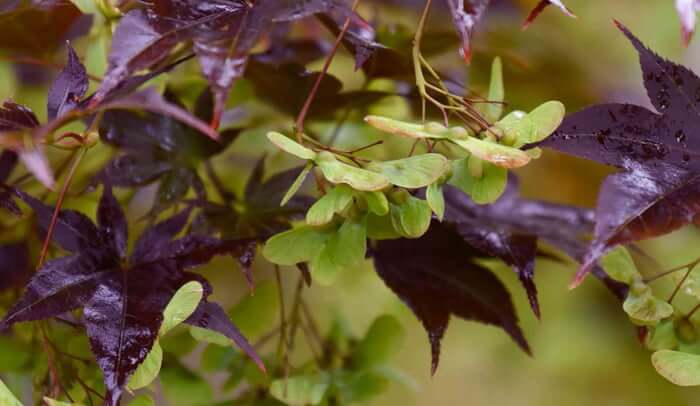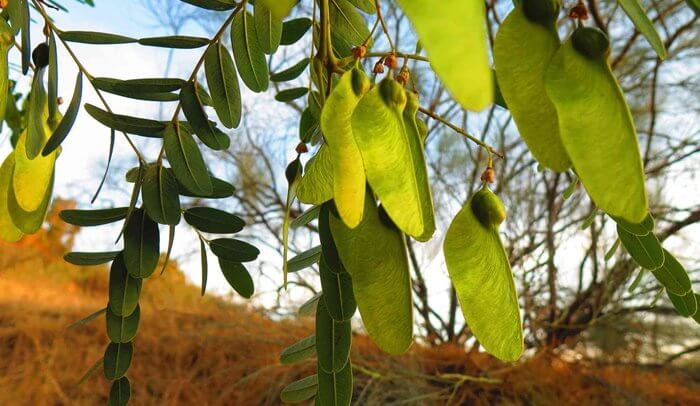Different trees produce varying types of seeds. Helicopter seeds are unique in that they fly away from the tree. The feature gives the seeds their name. Which trees produce helicopter seeds?
Several types of trees produce helicopter seeds. These seeds are also known as the samara fruit. It has a seed that has wings all around it. When the wind blows, it carries the fruit farther away from the tree that produces it. Maple trees, box elder trees, tulip trees, and ash trees among other trees produce helicopter seeds.
Read on for more details about the trees that produce helicopter seeds.
Helicopter seeds are also known as samara fruits, whirlybirds, or whirligigs. The samara fruit is a seed encased in wings. These wings ensure that they can fly away from the tree that produces them for them to grow on their own. It is a dispersion method that allows the tree to reproduce in distant lands.
Trees that produce helicopter seeds
1. Red maple
The red maple tree is suitable for every garden. It is native to the eastern and north-central parts of America. It grows to a height of 40-70 feet and a width of up to 50 feet. It also has a round or ovalish crown.
The red maple tree is also known as a soft or swamp maple. It is a deciduous tree that loses its leaves in winter. Its red leaves, flowers, and twigs give the tree its name. It is ornamental and provides shade as a street tree.
It grows well in well-drained soils. It also grows well in regions with more sunshine. While other maple trees produce greenish helicopter seeds, the red maple tree produces reddish samara fruits.

2. Silver maple
The silver maple tree is a fast-growing ornamental tree. The leaves of the tree have a silvery underside from which it derives its name. The silver maple is also popular for its sweet sap.
Every year the silver maple grows two feet per year. It can grow up to 50 to 80 feet tall. They grow well in wet regions while they are also drought resistant.
3. Norway maple
It is also known as a Harlequin Maple. It produces helicopter seeds in large numbers regularly. Its helicopter seeds travel over large distances. As a result, it is found in many places.
It grows up to 60 feet tall, and develops a thick canopy in good weather. Therefore, any trees or plants beneath it do not get to enjoy enough sun.
Its helicopter seeds are 2 inches long and have papery wings. They are extremely light and the wind can carry them over a long distance.

4. Japanese maple
It grows in different variations depending on where the seeds sprout. There are at least nine variations of the Japanese maple tree. Therefore, you may find a green or red Japanese maple tree with orange, red, or purple leaves. It is shorter than the other maple trees and grows up to 15 to 25 feet tall and wide.
They are beautiful landscaping trees that enhance the appeal of every garden they grow in. They will also produce thousands of helicopter seeds that get carried away by the wind to distant areas.
5. Velvet ash
The Velvet Ash is an ash tree that produces colorful helicopter seeds. It grows up to 50 feet in height and 60 feet wide. In full bloom, it has green flowers. It grows best in regions with full sun and in well-drained soils.

6. Green ash
Green ash is another ash tree that produces helicopter seeds. It grows up to 70 feet tall and 50 feet wide. It grows well in regions of full sun and in wet loam soils. It also grows well in urban areas.
It has a grayish-brown bark, green leaves, and purple flowers. It churns out thousands of two-inch helicopter seeds every season. They are light and can fly over vast areas. Those that fall in suitable conditions can sprout into a sapling fast.
Ash trees are at risk from Emerald Ash borers. They infest a tree and cause it to wither and die.
7. Tipu tree
The Tipu tree also produces helicopter seeds. It has a high trunk that grows up to 50 feet in height. It also produces an attractive canopy that rises above other trees. In season, it produces yellow and orange flowers that can be spotted on its canopy. The flowers then turn into the tipu fruit. The tipu fruit is a large brown helicopter seed.
It can grow in different regions as long as the soils are loam and acidic. It also requires full sun to flower and produces seeds and fruit. It is native to Bolivia. It is used as a landscaping tree in the different regions it grows in due to its bright-colored flowers and high canopy.

8. Tulip tree
It gets its name from its flowers that resemble tulips. It produces helicopter seeds in conical fruits. Its leaves are green and turn yellow in summer. The leaves are 4 to 8 inches wide. It has orange flowers that make it a good tree for landscaping.
9. Common hoptree
The Common Hoptree grows up to 20 feet tall. It is also a landscaping plant that produces helicopter seeds. It is often used as a flowering hedge. It grows well in shade in a full-sun region. It requires well-drained soils.
Its flowers have a pleasant smell that you can feel from far when in full bloom. It has dark green leaves that turn yellow in the fall. Its buds mature through winter to produce the helicopter seeds.
10. Winged elm
The winged elm is an attractive tree that grows up to 40 feet in gardens and cities. In the forest, it grows to greater heights. Its branches grow upwards to create a round crown visible from afar. It produces flat and hairy helicopter seeds. Its leaves are green and rough on both sides. It also produces small clusters of red flowers in winter.



